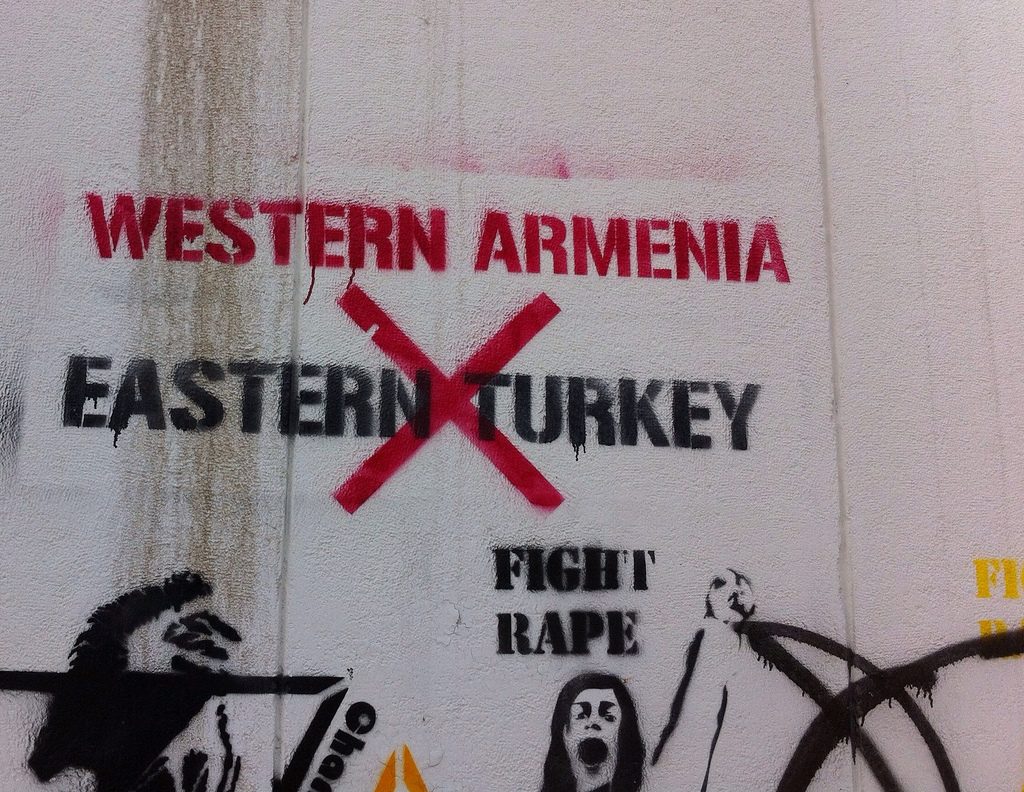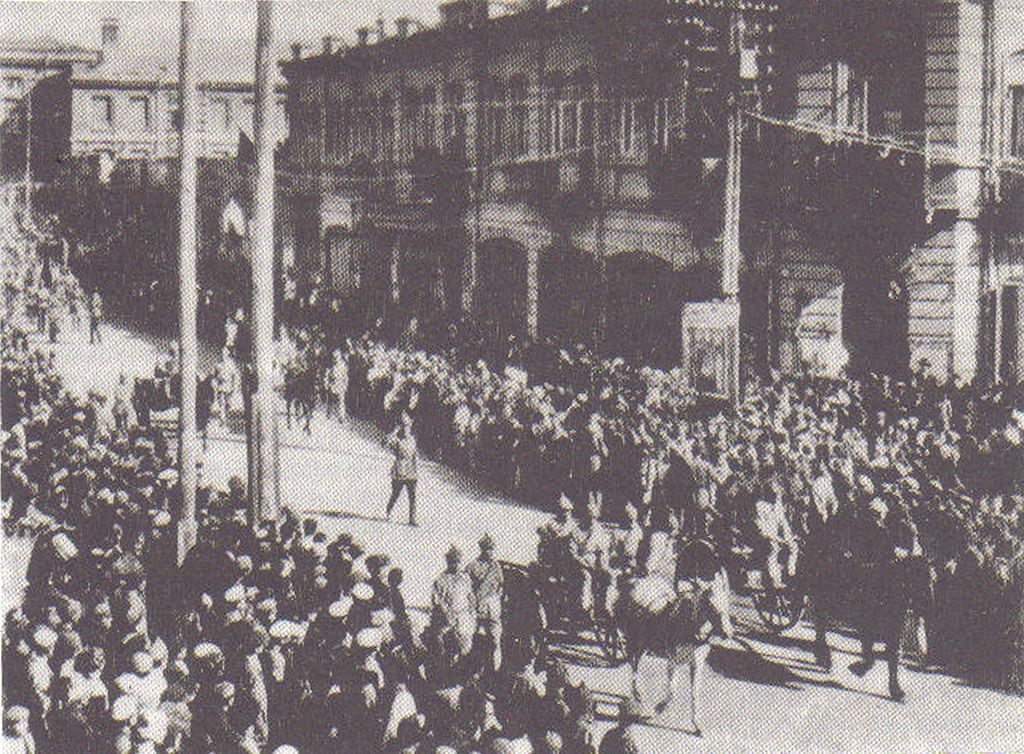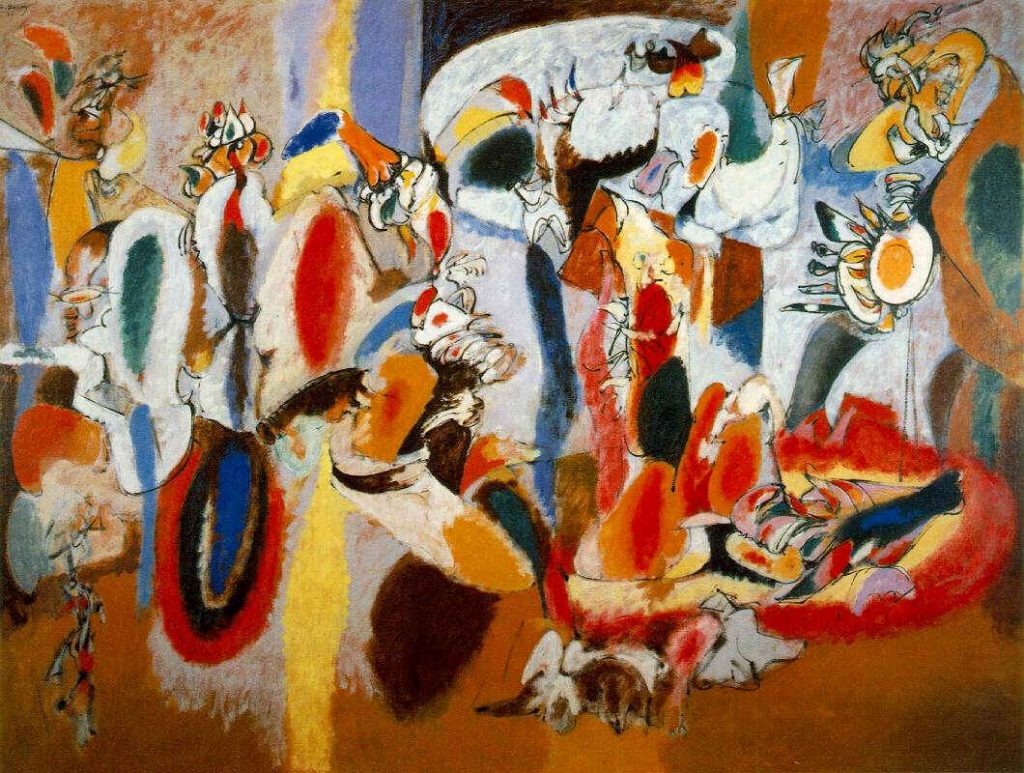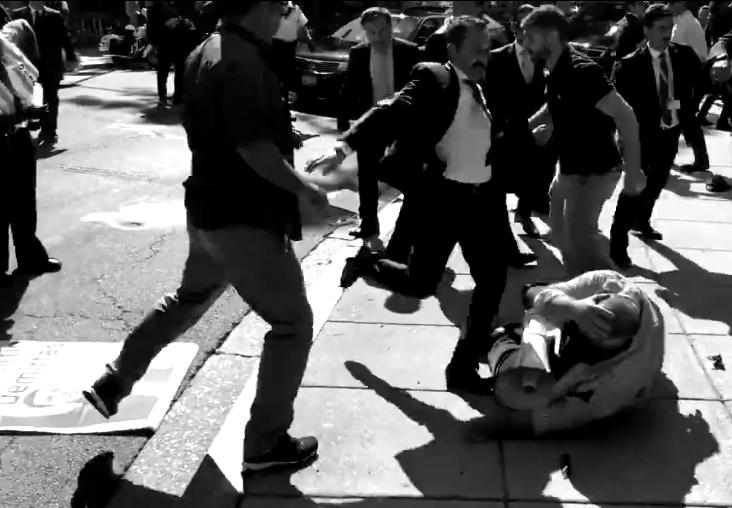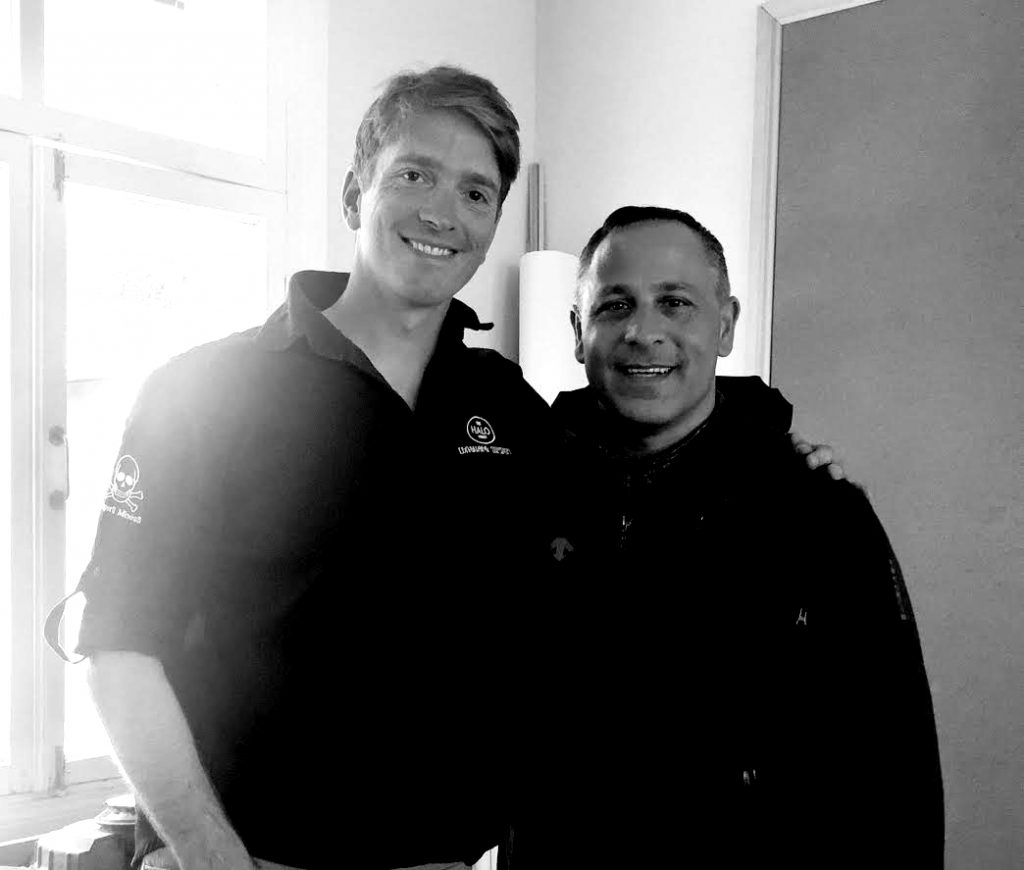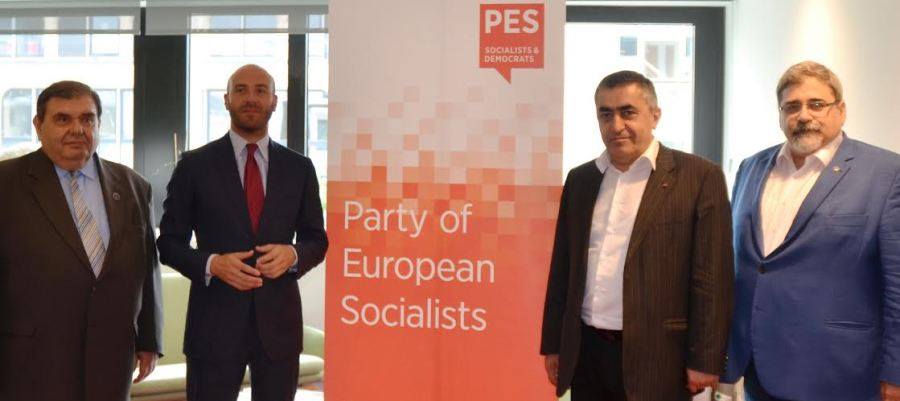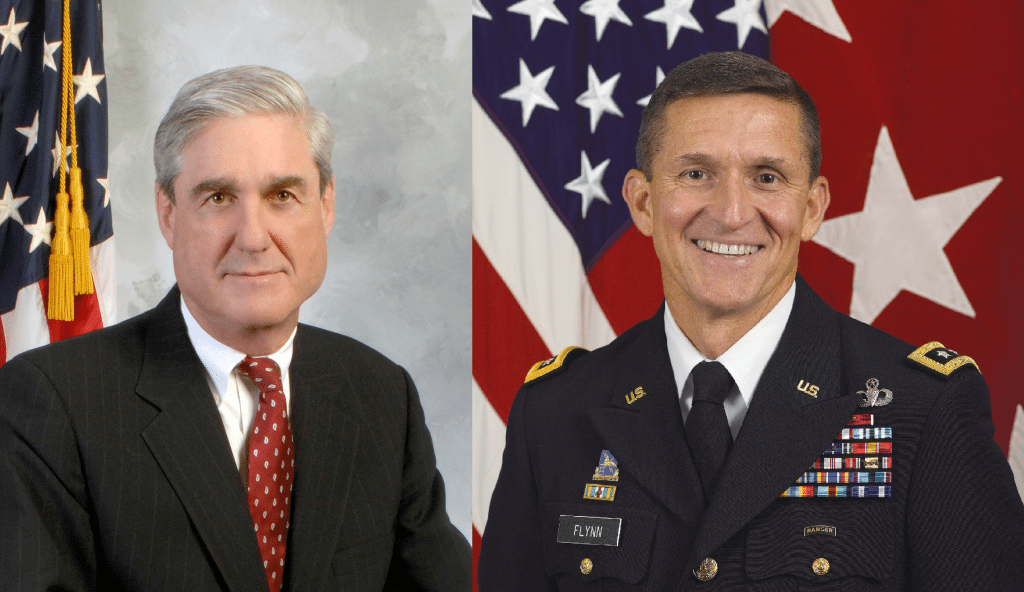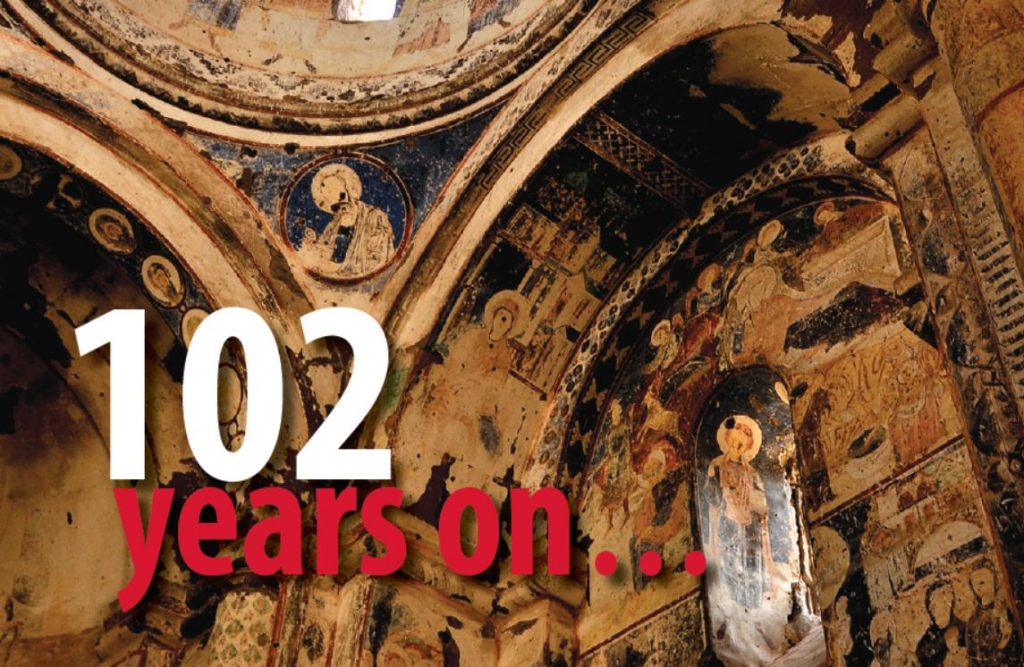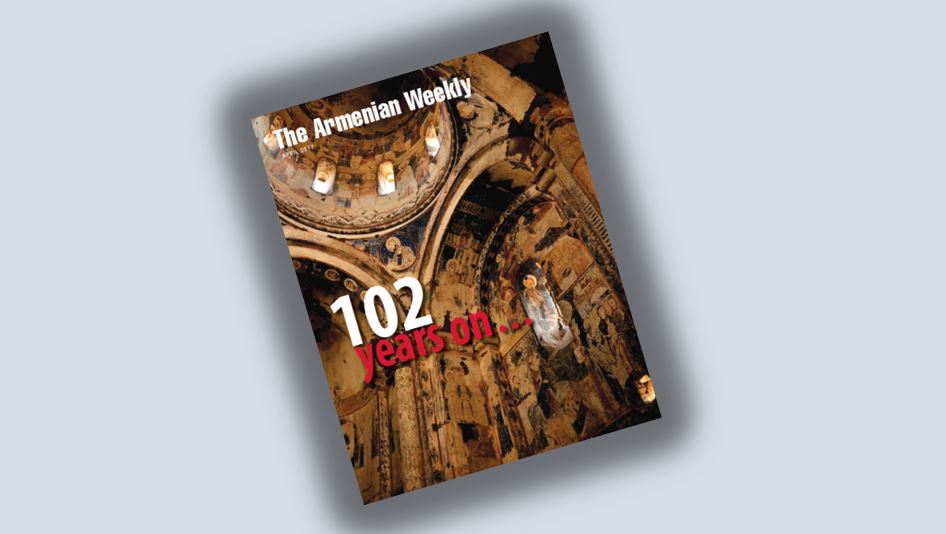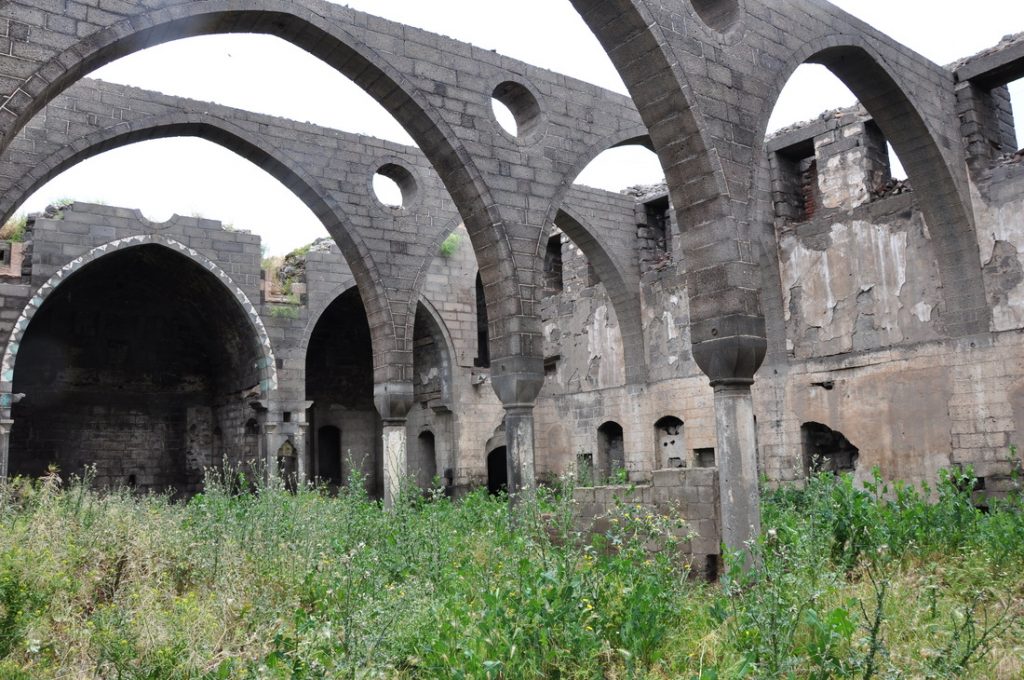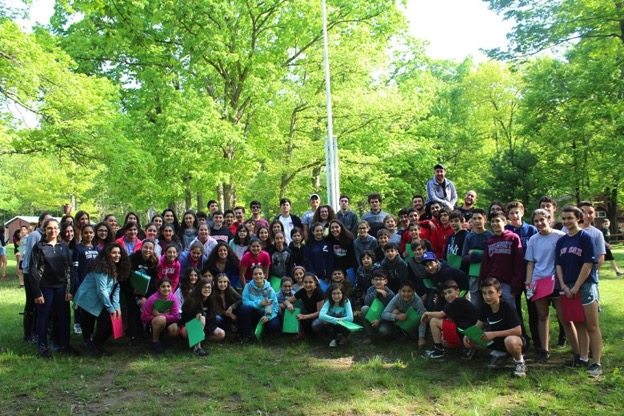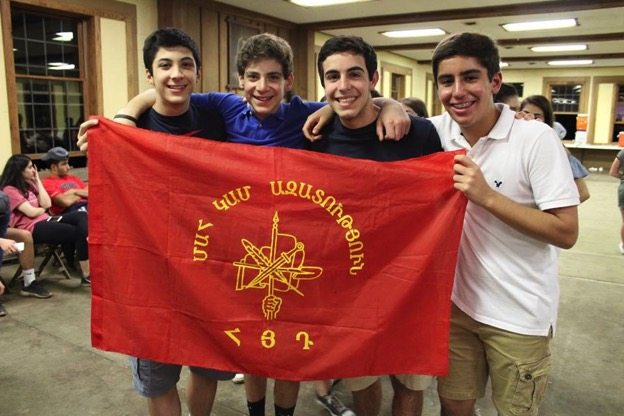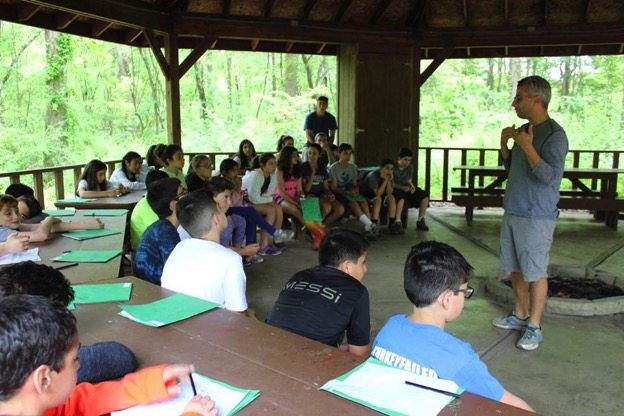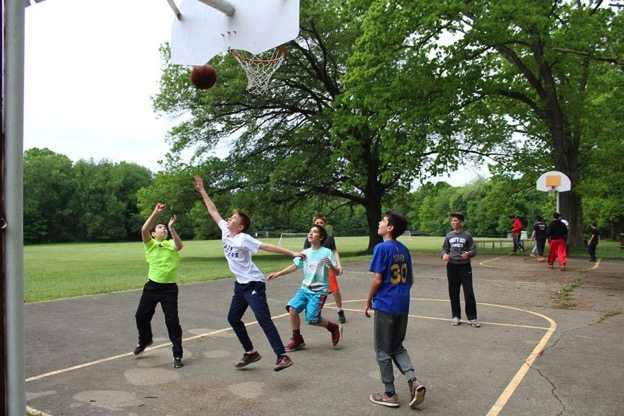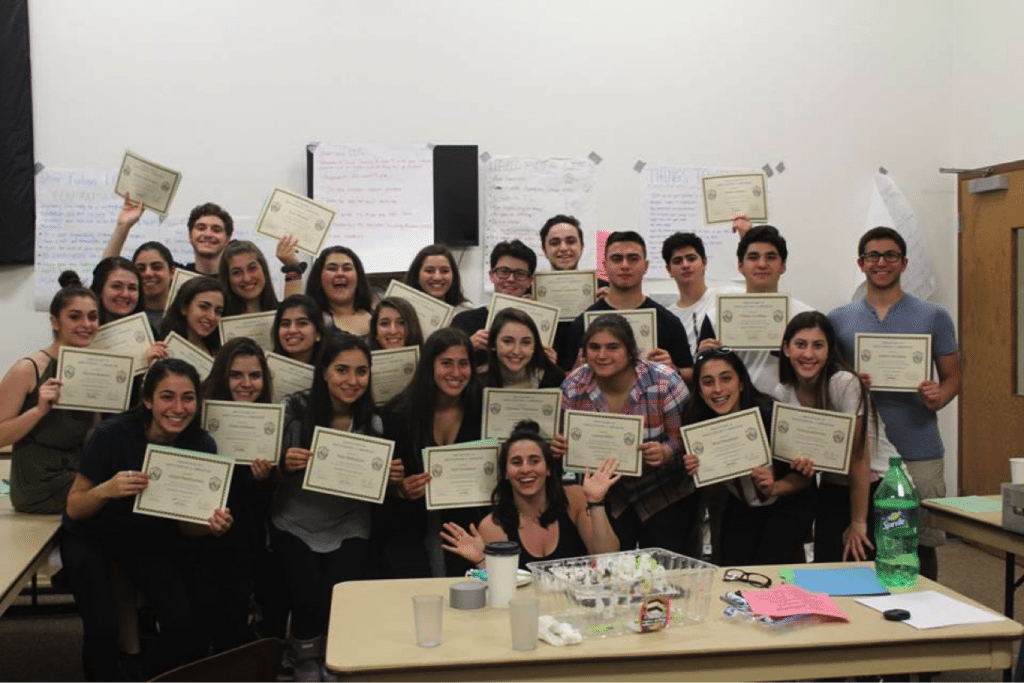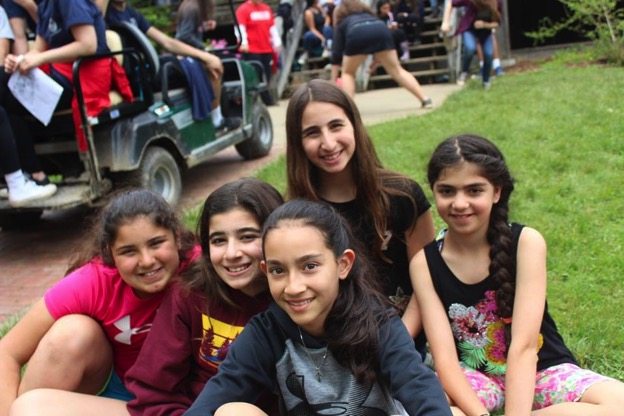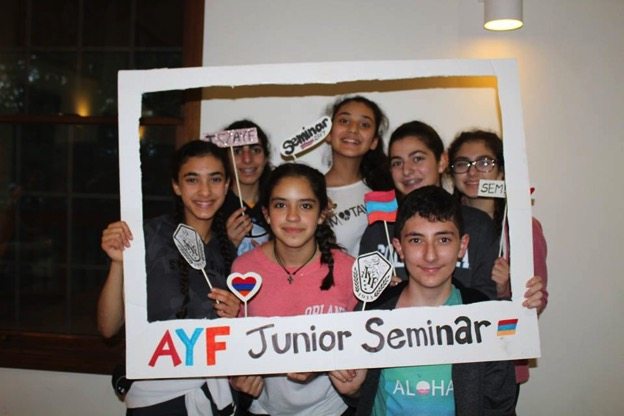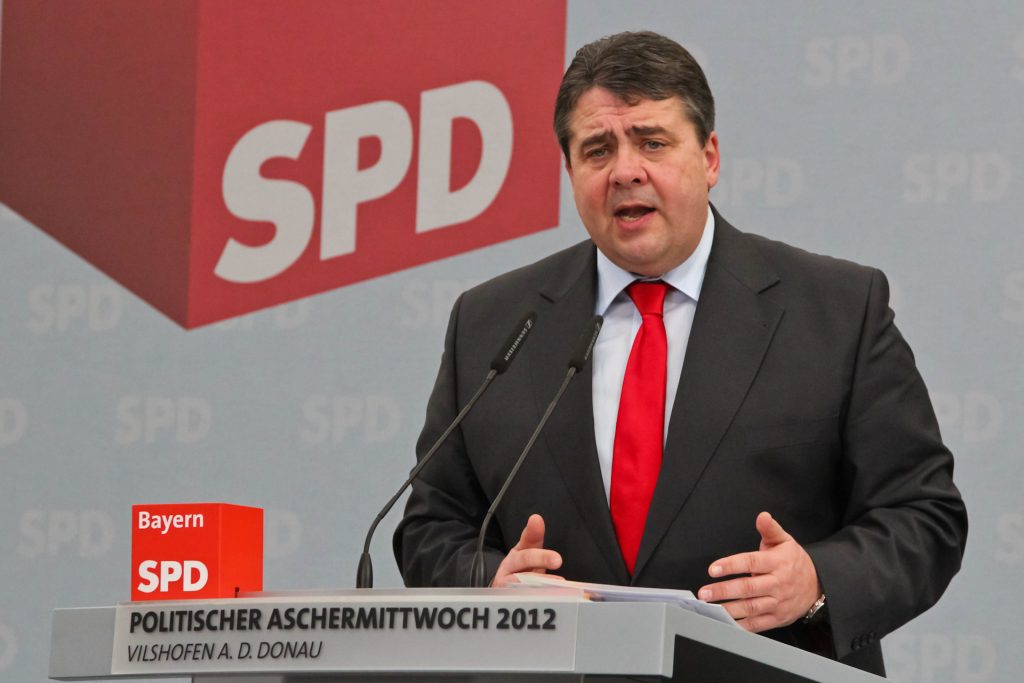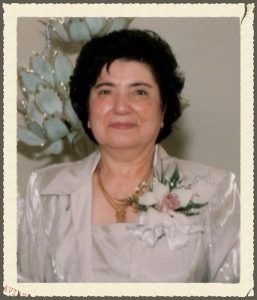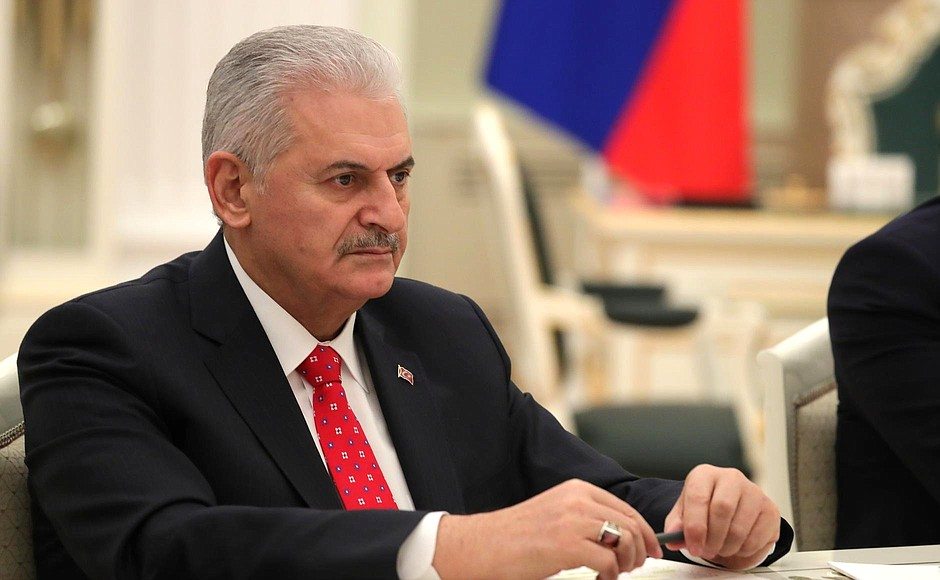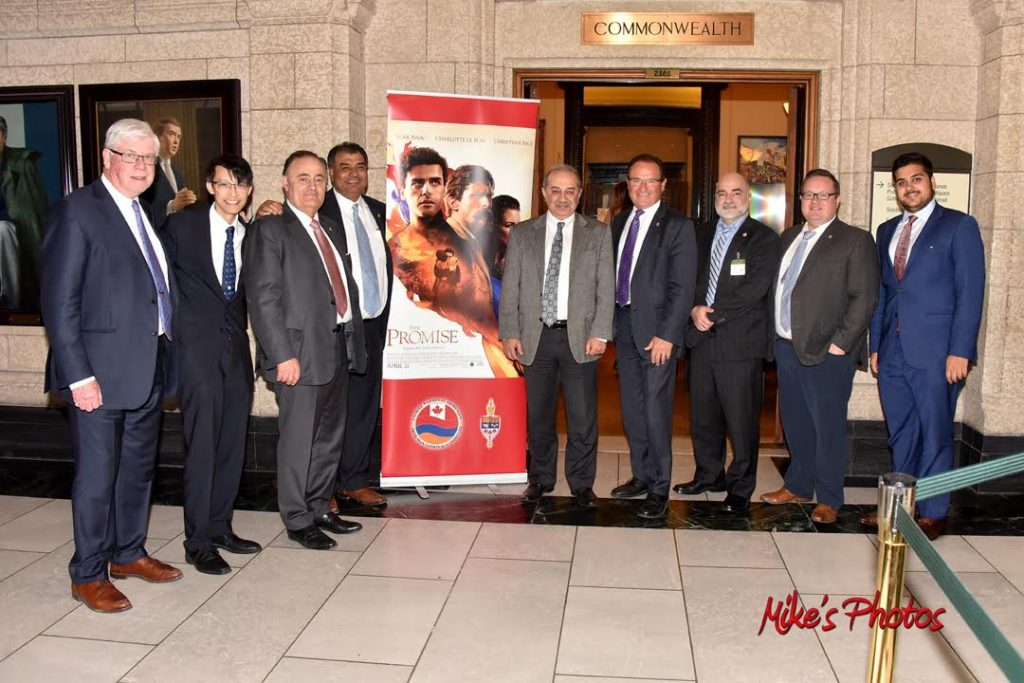From the Armenian Weekly 2017 Magazine Dedicated to the 102nd Anniversary of the Armenian Genocide
Did the USSR Really Lose the Cold War? Maybe as a Whole, but Some Have Turned Loss into Staggering Advantage and Profit. Now It’s Time They Pay for the Damage They Have Done—and Are Doing—Before It’s Too Late.
Beyond History
In addition to other topics and audiences, I speak somewhat frequently on the legacy of the Armenian Genocide to and with primarily Armenian audiences in the United States and around the world. Quite often, community members and even academics assume I am a historian. I have to correct them—at least when I have the opportunity. I don’t mean to suggest that I am insulted by being considered a historian, but as I tell people, that’s just not what I do. Now that I am more recognized for work on reparations, the misidentification sometimes shifts to assuming I am a lawyer or legal scholar. Again, the correction.
It is interesting that, despite the corrections, some interlocutors still go on to ask me about historical points that are not specifically related to my work or ask for legal strategies and even advice about particular individual lawsuit possibilities for thieved Armenian property. Again, there is no insult intended, but at these times I feel almost as if we are speaking different languages and simply cannot understand each other.
![]()
Graffiti on the streets of Beirut, Lebanon (Photo: Ted Swedenburg)
I am not an “academic nationalist,” in viewing my discipline of philosophy as the most significant of intellectual pursuits. Sure, the physical and social science disciplines, as well as aesthetic theory, law as an academic area, political thought, theology, and more, started within the discipline of philosophy, where their foundations remain. Certainly, philosophy students routinely have among the highest averages for standardized testing, examined by discipline. But intellectual pursuits are fundamentally complementary, despite the ways that disciplines are pitted against one another for scarce resources and the political attack on humanities and creative arts today. There quite simply is not science without philosophy (both ethics and metaphysics), no philosophy without history, and so on—or at least no point to doing these things in isolation from the fullness of human existence as registered across the gamut of scholarly pursuits. But, just as historical research is essential to Armenian studies, so is philosophical inquiry, even if this is generally unrecognized.
History is important, especially when past harms are central to the conditions of the present. Indeed, ignoring history is not just a recipe for that well-worn idea of repeating it, but much more importantly history is never history: History is the present; that is, it is what determined the tensions and problems and challenges of the present. Ignoring history in favor of focus on the present renders one incapable of understanding the present. Historians figure out—often through fascinating detective adventures—what happened and try to understand why it happened and how different events and trends are related and interconnected. In their philosophical dimension, they help us understand why certain views of history are more accurate than others, and even the criteria and methods we should use to make such judgments. Their task and skillset, however, does not extend to deciding what should be done about the legacies of that history. That does not mean that historians do not speculate in these areas, much as I might about historical matters; it does, however, mean that they typically lack the conceptual expertise necessary to engage this matter in its full depth and complexity, to understand for instance all the possible objections and underlying/internal tensions that exist within what might appear to be simple notions such as “reparations,” in the same way that I might not understand the complex set of documents relevant to a specific historical incident in 1915. I need an expert to lead me through the process.
Similarly, legal analysis can be very important when considering the practicalities related to the legacy of a genocide. Legal experts help us understand what is possible within the law. The innovative among them figure out ways to push the given boundaries of law in new directions toward greater justice. But, legal scholars are always as players in a game: The board or field and the rules are set and determine what can and cannot be done. Certainly the rules can be revised or even violated in some cases, but the basic play is determined by the physical setup and the rules. Thus, law is great for thinking within a given set of constraints, but it is only when a lawyer abandons law that the lawyer opens up the possibility of genuine system transformation.
History is important, especially when past harms are central to the conditions of the present. Indeed, ignoring history is not just a recipe for that well-worn idea of repeating it, but much more importantly history is never history: History is the present; that is, it is what determined the tensions and problems and challenges of the present. Ignoring history in favor of focus on the present renders one incapable of understanding the present.
The very point of philosophy, on the other hand, is to identify and comprehend grounding limits, critically engage them, and creatively rebel against all such constraints. It does not determine whether a certain approach to reparations will work within the existing legal framework, but whether that framework itself is adequate to the problem of genocide and, if not, what should replace it. Philosophy even allows the fundamental question of whether genocide is best understood as a crime, or if that imposes limits on comprehending it fully and addressing it adequately and appropriately. Philosophy does not determine whether this or that claim about the past is true or supported by the facts, but rather what it means to be “true,” what criteria are appropriate for such a judgment, and whether this or that particular assertion or judgment should have a claim on our attention or not—and perhaps most importantly, if something should be done about the legacy of the historical event, and what. At our present historical moment, indeed, the question is no longer, “Did the genocide happen?” (that is, proving it against denial) or “What happened?” or even “Why did it happen?” The questions are “What does it mean now?” and “What should be done about it now?”
This suggests something interesting regarding the debate that started about a decade ago among genocide scholars about whether those studying this form of violence should function as disinterested analysts or engage their object of study as concerned human beings. Historians, for instance, advocating the former position rightly point to the ways that victim groups sometimes and, to a much greater extent, perpetrator groups almost always seek to manipulate history—whether they warp history into inaccuracy or employ facts in a dubiously politicized way. But they miss a crucial bias on their own part. They consider this issue only from the perspective of historians seeking accurate representations of past events. Clearly, including in one’s very historiographic method ethical and political concerns is tricky at best and typically leads to compromised work. But ethical and political analysis is the very heart of some aspects of philosophy. Far from compromising such work, it is the work itself. Philosophers take ethical positions, for instance, and argue for them. That does not mean that bias is not a potential problem, when it causes poor arguments. But poor arguments are often found out and criticized as part of an overarching process of reflection on and analysis of a given issue. For a philosopher, to ignore the ethical dimensions, for example, of a historical issue is inexcusable intellectual negligence. Of course, historians should not be required to be ethically neutral about what they study, so long as their historiographic methodologies are not influenced by their orientations—that is, an orientation toward the relevant history is kept properly bracketed from the research into the facts. On the other hand, it is crucial for philosophers to take positions after careful study of an issue. Bias comes in, of course, when a philosopher simplifies an issue or ignores objections to his/her/their position in order to advance a particular viewpoint as stronger than it actually is.
The advocates of disinterest are inadvertently falling into a trap set by politically repressive forces in our world today. Whatever the ideological and practical differences among various countries at least in North and South America, Europe, Australia, and much of Africa and Asia, one trend that has taken increasing hold over the past decade has been the devaluing of the humanities and creative arts. It would be easy to dismiss this as the function of a growing level of intellectual inability among much of the world’s population, as personal mental activity is now shaped by the stunting, even debilitating, structures of communication imposed on us through the supposedly liberatory new media made possible by the internet—the constraining of analysis into 140 characters, for instance (on this issue, I am indebted to my student Ryan Lindsay for his excellent research on the “Inhibition of Nuance in a ‘Fast-Food Facts’ World”). As Lindsay emphasizes, this compression of the realm of thought explains why people as receivers of ideas and information are accepting poorer and poorer ideas and analyses. To it, we need to add a further dimension: intentionality. Those in positions of power the world over—and this means the relative elites within different power structures, from prime ministers and legislators (think of comments by U.S. presidential candidate Ted Cruz about the study of philosophy) to (some) university administrators and media personalities—react so strongly against philosophy and the humanities and creative arts more broadly not, as they might self-delude, because they objectively judge them to be relatively valueless, but because either (1) in their realm of reduced thought they simply do not understand what they do and thus cannot even perceive their tremendous value or (2) they experience work in these areas again and again as critical perspectives that expose the weaknesses of their agendas and their efforts to gain popular support for their ideas. The clever among them—often with philosophical training themselves—understand exactly the danger posed by well-considered, intellectually grounded challenges to the general population to think uncompromisingly critically about those things that appear the most certain and simple, and attempt to crush principled opposition with full awareness of what they are doing. The majority are victims of the denigration and marginalization of philosophically critical thinking and push others into the same exclusion from and loss of anti-analytical confusion, by erecting obstacles to meaningful education. Instead of appreciating the opportunity for progress that thoughtfully, responsibly innovatively discordant ideas provide, they typically react with a jejune naked imposition of power (from jailing dissidents to cutting departments) against reason and progressive creativity. For them, justice is truly the will of the stronger, as they view themselves as unfairly attacked precisely because they refuse to understand the fairness of the criticisms in what they perceive as a (mere) power struggle against inferiors (because only power shows in their mental framework, not reasonable arguments and evidence). They have the power, and assert it. Indeed, as a colleague of mine has so astutely commented, some seem to take pleasure in vanquishing reason through an irrational assertion of power, as this demonstrates a godlike effectiveness against the very metaphysical/rational structure of the universe.
I don’t mean to suggest that all academics are victims in these ways or to equate losing one’s academic job with being imprisoned for one’s political views, even as these are tending to converge in today’s Turkey with the dismissal of many professors and detentions of some. On the contrary, administrators are typically former professors and many fields and departments—philosophy foremost among them—have made themselves irrelevant by retreating into childish academic ego contests and feuds and embracing a positively medieval system of patronage centered in Ivy League and other elite institutions that resists challenging innovation and relentlessly buttresses the political, ethical, cultural, and social status quo by tying the personal identities of participants into the perverse status system that an astute anthropologist might liken to a high school-level culture of cliques.
The Armenian and the Universal
The first point to take from this opening analysis is a general one: In our tech-oriented, childish global culture, genuine intellectual independence, critique, and innovation that are the hallmark of philosophy and the humanities and creative arts more broadly, when done well, are not only marginalized in popular discourse but eliminated from curricula based on the circular argument that those who have not benefitted from this type of education and who have been told that time spent on it is at best wasted and at worst detrimental to future financial stability, are not interested in studying in such areas. The result is that societies have lost the capacity to engage in genuine social, political, ethical, and cultural progress because the very functionality of doing this kind of activity have been reduced or eliminated. Of course, some people struggle to do this work against the nearly overwhelming opposition to it. And some hint of this persists, as students are inundated with “critical thinking” training, while our societies again and again are told how self-critical we in fact are and how advanced, to boot. Without true critical abilities that are produced by more than such facile shadows of it, few are in the position to see the ideological frames and outright propaganda inundating us for what they are. One might go so far as to view the proliferation of “critical thinking” as having reduced it to a mechanical, formulaic exercise that undermines what it is supposed to promote.
The second is specifically Armenian. Two decades ago, I made an observation and called for an intellectual approach to Armenian studies that fell on deaf ears. Perhaps it is not worthy of significant attention, yet it does seem relevant to the issue I am raising here. Armenian studies has generally treated Armenian identity, history, creative work, etc., as an object of study. Whatever respect scholars might show this object, the academic engagement nevertheless renders Armenian things objects, passive in the face of study of them. Even art history before some more recent developments by certain innovative scholars treated Armenian artistic creation as a dead husk to be reproduced and essayed about but never to be a dynamic, evolving, living tradition in the present and for the future. As a result of these approaches, Armenian identity became something given in its fully developed form from the past, with the task in the present at best mere preservation. Even as artists, filmmakers, and writers have actually remade and created new forms of identity and life, the focus has remained the past as finished history. One could speculate a great deal about why—a wounded, weakened people latching on to former glory, a moribund political scene determined by a static Cold War, etc.—but that is not the issue here. My concern is that Armenian identity, culture, political life, etc., have been rendered passive even when there has been evidence of activity. While, for instance, certain writers, filmmakers, and artists looked at the world in part through Armenian eyes and established and elaborated an Armenian consciousness and Armenian perspective—or, more accurately, Armenian consciousnesses and Armenian perspectives—our scholars too often presented Armenia to the world through the same old tired Western or Eastern lens. Armenia was an object, not a consciousness, not a perspective, not a framework through which and the basis of which to engage the world.
The impact of this has not been noted but is of the greatest profundity. Today, particularly in political, military, and legal contexts (though not in literary, cinematic, or artistic ones), Armenian activities are largely derivative. A look at the Armenian Republic and its governance reveals the farthest thing from innovation, despite grassroots efforts at inventive progress. Armenia and its power structures sadly mimic standard post-colonial societies of the post-Soviet type and beyond. Its oligarchs are pale imitations of Putin and his cronies, its leaders are the same authoritarians that are such old hats around the post-colonial world, its economy features the same kind of debilitating corrupt parasitism that has marked many societies across the globe since the mid-20th century and before, and on and on. In a moment of cynicism, one might even wonder whether Armenia’s leaders are intentionally following a Turkish political model, with the exception of silence on a genocide. Lest one dismiss this as the result of Sovietization, a look at Armenian organizations around the world reveals the same kind of imitative mimicry. There are notable exceptions, of course, which I will not list here because I do not want to taint them through association with what is surely to be condemned by regressive forces in what I am writing here. But organization after organization follows the standard NGO (non-governmental organization) or charitable or religious model, in which wealthy dilettantes and egotists invest their resources in order to see their names on letterhead and be invited to meaningless meetings with celebrities and government officials, so they can adorn their walls with photographs announcing their own importance and relevance. Personalities and wealth, not commitment and insight, dominate the scene for Armenians, as they do for group after group after group across the world’s minorities and majorities. Internal infighting and inter-organizational conflict of the most mundane forms mar the public presence of political, cultural, and educational institutions. Millions are given for the institution of Armenian Studies university chairs, only a small percentage of which have produced anything of significance and that are attempts by Armenians to gain academic legitimacy for study of Armenian things in the most blandly traditional ways. The most known Armenian celebrities are vacuous jokes who enact the banal forms of desperate notoriety-seeking and public personas. They are Armenian by descent, but nothing in their actions or words suggests any kind of truly Armenian consciousness. I could go on, but have probably alienated a sufficient number of people in the Armenian community already. My objective is not to do so, but rather to expose the root of the failure of Armenian identity, scholarship, politics, and more.
A look at the Armenian Republic and its governance reveals the farthest thing from innovation, despite grassroots efforts at inventive progress. Armenia and its power structures sadly mimic standard post-colonial societies of the post-Soviet type and beyond. Its oligarchs are pale imitations of Putin and his cronies, its leaders are the same authoritarians that are such old hats around the post-colonial world, its economy features the same kind of debilitating corrupt parasitism that has marked many societies across the globe since the mid-20th century and before, and on and on.
There are exceptions, of course. For all of the Armenian political action that fits within the safe framework of tame electoral politics, there are groups and individuals who reject this politics as part of the very force oppressing Armenians and seek alternative political, intellectual, and artistic forms and futures. As a journalist and activist, David Barsamian has been at the center of left progressive politics in the United States and globally for decades, creating new forms of political consciousness and activity in the space he has helped carve out. System of a Down took various elements of music, from punk and metal to Armenian folk forms, broke all of it down into a range of components, and reworked and recreated them to produce a clearly Armenian (in lyrics and music) yet global form of music that shattered old boundaries and is widely imitated. Atom Egoyan refused to treat the Armenian Genocide through a direct and simple reaction to denial, but instead pushed the issue of denial and the meaning of historical events for present-day people in new directions unexplored before in the Armenian community and beyond it. His innovations changed cinema itself in ways that have yet to be fully tapped, even as these innovations challenged Armenians and others to relate to their history and social conflicts in new ways. Scout Tufankjian has merged subject and object to create a new Armenian framework (her camera’s eye) through which to see the world that at the same time celebrates and advances a complex, ever-emerging, never fixed, multivalent Armenian identity. In her work, the no-longer-objectified Armenian object becomes agent. Chris Bohjalian has created a new framework for presenting the Armenian Genocide, through the lens of personal, human characters embedded in everyday lives yet with complex identities and relations across difference. He has provided a new kind of consciousness of the genocide that resonates both with Armenians and with the vast number of non-Armenian readers he has across the globe. Eric Nazarian likewise is opening up a new conceptualization of the Armenian-Turkish relationship, mediated through both an engagement of history and a material object that cannot simply be ignored or put aside, and in its persistence is embraced as itself an instrument (in both senses) of reworked sensibilities and relationship. Through poetry, history, and memoir, Peter Balakian crafted a new sensibility that calls attention to the ways in which Armenian issues and identity have long suffused American and universal experiences. In his complex hybridity, he is neither a typical Armenian nor a typical American poet, but something richer, flowing between worlds in a manner that recognizes and forges connections along lines of human rights concern. In this way, he has become a celebrated Armenian and American voice, pushing both toward a new kind of inclusivity. The importance of that voice has been recognized with the highest literary award given in the U.S.—which, combined with his profound and committed human rights activism, has propelled him to likely future consideration for a Nobel Prize in Literature.
And there is Arshile Gorky—the purest example. As art innovative historian Kim Theriault has demonstrated—against previous Orientalist dismissals of the relevance of Gorky’s experience of the Armenian Genocide and dislocation as refugee emigrant from his homeland, traumatized by the genocide—Gorky drew on both Armenian artistic styles and methods and the most inventive in Surrealism and other movements of the global art scene, to create for himself and the world an entirely new movement in art, a leap to pure abstraction linked intimately to deep internal emotional life. Pain, hope, despair, and nostalgia became color and form, and the internal suffering and jouissance expressed in the very nature of his painting, in a way Nietzsche heralded and would have envied. Through him, Armenian art went from an object of specialized historical study to a living production of the most universal appeal that continues to infuse the art world even today. (In doing this, it must be noted that, against the inertia of and resistance in her field, Theriault herself developed a different methodology for art history itself, further Armenian intellectual agency that helped rescue Gorky from a flattening identity erasure that reduced out of his art its multidimensional Armenian core.)
The Need for Reparations for the Armenian Genocide
It is bad enough that Armenian politics are largely derivative, but that they replicate extensively some of the most negative tendencies of corruption, post-colonial/post-Soviet authoritarianism, cronyism/nepotism, ineffectual electorialism, etc., renders the lack of originality profoundly harmful. I have argued that the challenges currently facing the Armenian Republic, the Artsakh Republic, and the global Armenian Diaspora are heavily determined by the harms done through the 1915 genocide and related mass violence and discrimination against Armenians before and after. The devastating demographic destruction that has resulted in a much smaller share of the regional and global population, along with the territorial losses and massive economic expropriation of virtually all Armenian resources in the Ottoman Empire, as well as the traumatic impacts of the violence and loss, dispersion and family destruction, pressure on identity requiring great effort to maintain, and other aspects of the genocide, have left Armenians a small, weakened, marginalized group politically, geographically, and in terms of identity.
For instance, the poverty in Armenia today as well as the great drain of resources required just to preserve some semblance of Armenian identity throughout the diaspora can be traced back to the massive wealth stolen through the genocide, from factories and farms to shoes and kitchen pots and pans. What is more, Turkey’s aggressive approach to Armenia and Armenians manifests the enduring mentality embedded in its culture and political, social, and military institutions and practices, and is all the more effective because of the tremendous resources Turkey has built on the pilfered belongings and assets of Armenians (and Greeks and Assyrians), which were, according to respected analysts, the basis of the entire economy of the Turkish Republic from its origins and the continuing lack of accountability in the international legal and political realms. As much as Armenia and Armenians have been debilitated by the genocide, that much Turkey has gained—and in terms of wealth and power has seemingly endless reserves to use against Armenians.
Given this, reparations are clearly just. What is more, they are absolutely necessary if Armenian identity, culture, and statehood is going to survive in a meaningful way into the future. Unfortunately, the trend for Armenia is not positive. The lack of economic infrastructure and resources, the restricted territory in size and land-locked location, the hostility of Turkey and Azerbaijan, the vassalage to Russia and manipulation by the United States and the European Union, and the general insecurity of Armenia in military, economic, and political terms have driven massive emigration that has cut in half the pre-Soviet-collapse population of almost 4 million and threatens the very existence of Armenia as a viable state. Without substantial, meaningful repair that includes territory (needed for food production, sea access, and other foundations of a viable country) and other economic resources, it is an open question whether a genuinely independent Armenia will exist in 50 years, or whether it will be de facto incorporated into some other state such as Russia. If the genocide is long over, its effects are still far from finished playing out. The final impact of the genocide might still take decades to be consolidated, as the survival of Armenians as an identity group and Armenia as a political entity hang in the balance.
From Imitative Corruption to Transformative Repair: A Last Hope
To say that genocide reparations are necessary for the survival of Armenians as a people and Armenia as a political entity is not to claim that they are sufficient. The genocide is not the only challenge. The legacy of the Soviet Union and its compounding impact on the 1991 republic are substantial and must be addressed as well. There are two dimensions that must be confronted.
![]()
Members of the Soviet 11th Red Army marching down Yerevan’s Abovyan Boulevard, effectively ending Armenian self-rule.
First, as discussed in “Resolution with Justice,” the report of the Armenian Genocide Reparations Study Group that I chaired, there are significant questions about the concrete implementation of a reparations process. How and to whom would reparations be made? How would awarded material reparations be used to support the redevelopment of the entire Armenian nation? And so on.
One central problem to be faced was that of the Armenian government itself. Given the rampant corruption through which an obscene elite class of the super-rich has gorged itself on the lifeblood of the masses and pushed a large percentage of the population into often abject poverty, could the government and other elites be trusted with even a significant part of, let alone sole, leadership in such a process? Their unfolding legacy is, after all, a thriving industry in the trafficking of women and girls into sexual slavery; an all too frequent disregard for and active repression of human rights, from violence against peaceful political protesters to tacit consent to widespread domestic violence and active support for brutal oppression of the LGBT community; and a bureaucratic rigidity and narrow-sightedness that has prevented the government from such basic things as developing an active international political campaign to explain the Karabagh “conflict” as in fact a massive human rights violation against Armenians culminating from a century-long effort to erase the Armenian presence in this homeland. It is telling that, despite strong oppositions between different presidents and those associated with them, in these regards the results of their exploitative and extractive activities have been so similar that it is quite appropriate to count the government since 1991 as a single regime. Even where the government and other elites do support an appropriate approach to the legacy of the genocide, their propagandistic and authoritarian tendencies might well undermine the positive impacts of an educational and commemorative process in Armenia, Turkey, and beyond.
And, in the same manner as characteristic of world leaders and cronies who have enriched themselves by skimming foreign aid to their countries—Suharto of Indonesia is a well-known example but far from alone—one would have to be naïve to believe that Armenia’s political elite, regardless of party affiliation, and oligarchs and their minions, will not enrich themselves on the resources coming in that should be used for and are desperately needed by the general population. Unless Armenia changes fundamentally and establishes a genuinely democratic, open, ethical government and political structure, reparations, far from supporting long-term viability for the republic and global diaspora, are likely not just to further enrich the corrupt leeches dominating Armenia today, but in fact to extend their power and advantage over the bulk of the population—that is, to make things yet worse in Armenia, giving a whole new meaning to the criticism of irresponsible reparations as “blood money.”
To say that genocide reparations are necessary for the survival of Armenians as a people and Armenia as a political entity is not to claim that they are sufficient. The genocide is not the only challenge. The legacy of the Soviet Union and its compounding impact on the 1991 republic are substantial and must be addressed as well.
How can we see the genocide as anything but extended in its effects if territory returned is appropriated by the oligarchs and political elites? For average Armenians, what would the difference be between the situation now, with lands under Turkish control, and lands controlled by a class of cynical exploiters and destroyers whose continued existence is arguably the greatest immediate threat facing the general population of Armenia today? Just because the new lords’ names end in “yan” does not mean that these lands will have truly been returned to Armenians and Armenia.
What is more, even a substantial reparations package that includes territory might not be sufficient to support the survival of Armenians as a people and Armenia as a political entity. Despite the limitations of the Soviet Union, much as Armenians built under the Ottomans, so they built under Moscow. The largescale theft of assets through corruption, “privatization,” and commu-capitalist exploitation of labor (or a hybrid of the three) is a significant factor in the economic vulnerability and desperation of the republic today. By standards of abstract justice and basic need, Armenians who benefited and/or benefit substantially from their use of the Soviet and post-Soviet systems have an obligation to make reparations to provide a basic opportunity for a decent life to the Armenian multitudes who have lost out due to political repression, expropriation of wealth, and exploitation. This includes many if not virtually all political leaders, business leaders, and others besides. While without the slightest prick of conscience they have used Armenia as a vast wealth reserve open to pilfering, their actions are morally deplorable. Indeed, every one of their thefts is a treason.
It is not just those within Armenia who owe reparations. Soviet-era leaders, especially those who have increased their wealth and power since 1991, are just as liable. It is a delusion to think that the United States won the Cold War—or, rather, irrelevant. If the U.S. gained a symbolic victory that sent it desperately in search of a new enemy against which to perpetuate its own dubious economic, political, and military system, the “fall” of the Soviet Union simply swept away the impediments to the power-elite that had emerged in the Soviet Union (organized crime, political bosses, etc.) and whose wealth and power were then being inhibited by the limits allowed in a Soviet system that had at some level to prevent rampant poverty to remain apparently legitimate. In the Soviet era, this class positioned itself with resources, connections, and power to dominate in a zone of economic and political “freedom” from restriction, that is, the post-Soviet vacuum. They won the Cold War, which thus became a war of liberation…for oppressors.
And, they imposed a system—both formal and informal—that retained authoritarian, violent/repressive, and other elements of the Soviet system coupled with a new unfettered, amoral capitalism. This is the system internal to Armenia as well as the neo-colonial domination of Armenia by Russia. This system has been reproducing itself and evolving steadily. Newer generations and those not necessarily part of the Soviet power class have been integrated into it. It is the post-Soviet cleptocratic/plutocratic/authoritarian state and civil society form that must be held accountable and transformed. It is through meaningful reparations and only through meaningful reparations that this is possible. The wealth must be returned, the guilty punished, and the state(s) and society rehabilitated. To leave the state and civil society structures intact will make any redistribution of political participation and economic resources a temporary step to a regression to the existing order or on the path toward a new repressive form.
Contribution of an Armenian Framework
If the foregoing analysis suggests that the situation is desperate, it is. However, in that desperation, as in Gorky’s traumatic suffering, there is great potential. Through genocide and Soviet exploitation and oppression, Armenians in Armenia and around the world have understood a broad range of failed, destructive models of social, economic, and political organization. Perhaps they are starting to realize that no existing political system or conceptual framework has worked or will work in the present age: not liberalism/capitalism, socialism, or any of their variations or distinct challengers. Just as Gorky needed to invent a new form of art, the survival and future well-being of Armenians depends on development of a new post-genocidal concept of national identity and a new economic and political form that can (1) be generated from within a corrupt, oppressive local and global system and (2) address the persisting problems of modernity/post-modernity in general and of post-genocide groups in particular. No post-genocide (or post-colonial, post-Apartheid, post-slave, post-communist as well as neoliberal, patriarchal, etc.) group, let alone a dominant group, has accomplished this, though many have contributed to possible solutions. We need new social and political forms. Out of desperate Armenian need there can come great invention and advance, a true contribution to humanity.
![]()
Arshile Gorky. The Liver is the Cock’s Comb (1944), oil on canvas, 73 1⁄4 × 98″ (186 × 249 cm), Albright–Knox Art Gallery, Buffalo, New York.
In the current era, with environmental degradation and resource scarcity approaching crisis levels, with neofascist movements sweeping across the globe in violent waves, with rampant celebrated militarism, humanity as much as any genocide victim group in particular faces a genuine question of survival. Because Armenia as a microcosm faces similar challenges to the world as a whole, generating useful approaches to Armenian problems means contributing to global solutions. For the first time in centuries if not millennia, Armenia and Armenians have a chance to matter in a real manner. Armenians understand the problems intimately. Armenians understand denial in a special way, understand that in the aftermath of mass violence there is another phase of abandonment and ontological, or inertial or entropic, ruin. Armenians understand deterritorialized national identity, which is appropriate for a globalized, shrinking world. These experiences and comprehensions are the foundation of an active, creative Armenian approach to the problems that can be constructed and added to other elements produced by other groups.
Development of an Armenian framework with global implications has already begun, though it remains mostly at the margins of the structures of the republic and diaspora. In the republic, political protestors have opened a space for alternative discourse in the face of 21st-century repressive apparatuses. In the interstices between organizations, individuals and groups in the diaspora routinely produce new ways of thinking and goals, even if at present they have no means to advance (toward) them concretely. Armenians must bring the margin to the center.
Elements that are already in play include ideas about demilitarizing and denationalizing traditional homeland territories in today’s Turkey depopulated of Armenians through genocide, to allow Armenians full access to the lands for business and residential purposes, with tax benefits going to the republic. While I do not necessarily endorse this approach, it is innovative and addresses complex problems arising from any consideration of territorial reparations for lands occupied by members of the perpetrator group who were not actively involved in perpetration.
Why can’t Armenians also drive a rethinking of political organization of societies toward new forms of participation that transcend the limits of democracy, particularly in the (dis)information age in which democratic elections are easily manipulated and also can reinforce the power of reprehensibly oppressive majorities? Through bitter experience, Armenians have the opportunity to recognize that democracy itself, however progressive, can lead to subjugation unless it is supplemented by additional anti-oppressive features. If the solution is not yet apparent, confirming the potential for a solution is surely an important first step. Instead of intentionally or by default imitating bad neo-liberal or bad post-communist political orders, why not develop and propose new possibilities, even if some will be discarded for bad consequences or their inadequacy for the problems faced. Why can’t Armenians develop a reparative model that can accommodate effectively contemporary social justice issues and the demands of historical justice, a pairing that has long been presented in philosophical, conflict resolution, and other circles as an irreducible dichotomy?
Armenians understand denial in a special way, understand that in the aftermath of mass violence there is another phase of abandonment and ontological, or inertial or entropic, ruin. Armenians understand deterritorialized national identity, which is appropriate for a globalized, shrinking world. These experiences and comprehensions are the foundation of an active, creative Armenian approach to the problems that can be constructed and added to other elements produced by other groups.
And, Armenians are already rethinking the concept of “reparations” itself. Armenian experience shows that it is not just wrong to consider reparations as a return to the status quo ante, as the states previous to genocide contain within them the tendency toward genocide.
A notion of repair that reintegrates victims/victim groups into the prevailing legal, political, economic, and social order is just as faulty. For it is not just the local conditions but the global order that drive genocide and a range of other violences and oppressions of our world. Indeed, the present world order has been largely formed through genocide, slavery, apartheid, aggressive war, colonialism, imperialism, patriarchy and mass violence against women and girls (including in its various demographic implications), and economic exploitation. To help one group to fit back into the system after being victimized by it means simply that other groups will be pushed into the role of victims that the system requires for its functioning. Indeed, reparations can reinforce that system, as wealth is pumped into capitalist projects that result in exploitation and related harms. Reparations must be socially, politically, culturally, and economically transformative, such that the very term must change, perhaps to “progressive, creative, and transformative historical justice.” We might finally be prepared to recognize that repair is the wrong concept, that there is no comfortable previous state nostalgically to return to, and that the burden of victims is not just to receive reparations conceptualized by others but to create a model for what is necessary in the aftermath of genocide, where no accurate model has yet been produced.
Conclusion
Surely, what I have written will rankle many readers. I have not written to be provocative, but to try to open up a permissive space for genuinely free thought. I expect and invite challenges, disagreements, and even condemnations—so long as they do not rely on restatements of stale ideas. Certainly in the republic but perhaps just as much in the diaspora, we lack this space of experimental innovation. If anything is correct in what I have here written, it is that Armenian survival depends on opening that space and using it to its fullest potential. It is perhaps impossible to convince those intent on remaining part of the corrupt, debilitating establishment to give up their self-interested or ideologically-driven commitments. But, at least they can leave Armenians and Armenia to those willing to serve it.


